Rethinking Lake Monster Traditions
Posted by: Loren Coleman on July 27th, 2011
Looking at a book in the context of its time and the turmoil under which it was published is often helpful in understanding it a bit better.
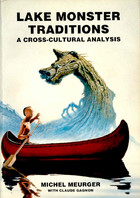
How have we all internalized the cryptozoology study, in French, Monstres des lacs du Québec: mythes et troublantes réalités by Michel Meurger and Claude Gagnon (1982), and the version which was modified and republished in English, as Lake Monster Traditions: A Cross-cultural Analysis by Michel Meurger and Claude Gagnon (1989)?
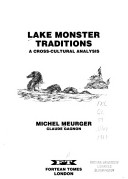

I recall, with great anticipation, the days when I trekked to Quebec during the early 1980s, camping out at many of the lakes said to be inhabited by the various monsters researched by Meurger and Gagnon, and searching Quebec bookstores for my first copy of this specific French book. I did eventually find it in a tiny Quebec shop, and even though I could not read French, I very much enjoyed obtaining this treasure.
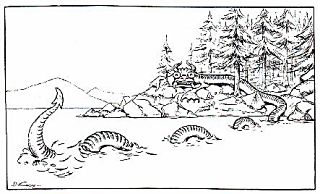
It was obvious the authors had done quite a bit of research, especially regarding finding original sources and old illustrations.

My wife (at the time, ex- now) is the granddaughter of the first chair of the French language department at Dartmouth College. Her French-born mother would translate passages of the book for my entertainment when I use to bring it on family visits to Hanover, NH.

Michel Meurger. Photo by Patrick Huyghe.
When the book came out in 1989, from Fortean Tomes, I was delighted to read it completely in English. However, I was disappointed by what I felt to be a shift in tone. The earlier book was about the data and was a celebration of discovery of the information found in Quebec. Yes, there was a good level of skepticism in the book regarding fogs, fish, and phantom reports (as there should have been) that all that was seen were not monsters. But it was done with a good measure of passion and joy.
The English language book, from what I had heard, was the end result of an alleged feud between Meurger and Gagnon. Gagnon wanted to merely present the data. Meurger wished to populate the book with his debunking theories about folklore being the root of most cryptozoology. As fate would have it, Fortean Times and Fortean Tomes were going through a similar shift, as well, and the perfect storm occurred in this book. It became the book that many would point to for years saying that most cryptids were more folkloric that physical. The original point of the 1982 book, I felt, was lost in translation.
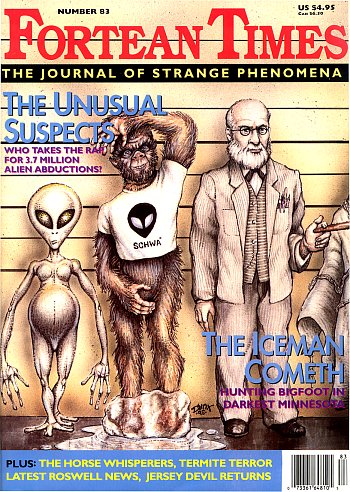
I thus saw this book being rather reflective of the actual historical change in the editorial policy at Fortean Times. Some of the fun in publishing appeared to go out of the sails of Fortean Times. The establishment of Fortean Tomes and the publishing of Lake Monster Traditions signaled an expansive commercialism in Fortean Times that was reinforced with their purchase by John Brown Publishing soon afterward, in 1991.
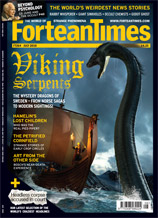
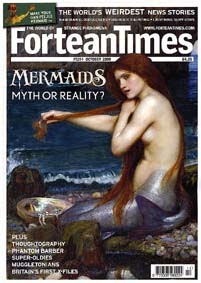
It will be recalled that the London-based company John Brown Publishing was formed in 1985 by John Brown who had previously run Virgin Books. Brown began with two magazines – the adult comic Viz, for which John Brown had secured the rights, and HotAir, Virgin Atlantic’s inflight title. Buying Fortean Times in 1991 demonstrated the popular nature of the magazine, but also mirrored the transition from the old days of The News to the new look, feel, and tone of Fortean Times. FT had a lot more to do with debunking than traditional Fortean skepticism in the new John Brown days. This trend in the magazine continues into the present era of publishing about cryptozoology, although John Brown sold FT to investors about a decade ago.
In many ways, I saw the new English version of Fortean Tomes’ Lake Monster Traditions in 1989, as the screaming banshee in the middle of a dark Quebec lake, foreshadowing the coming debunking transformation of the Fortean journal from witty and merry, to woeful and unhappy.
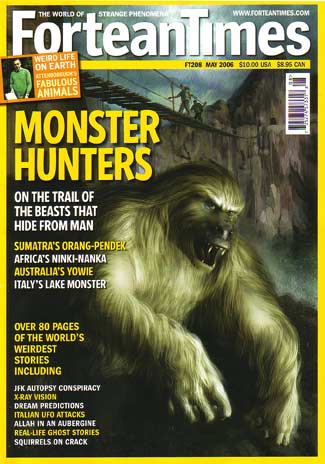
About Loren Coleman
Loren Coleman is one of the world’s leading cryptozoologists, some say “the” leading living cryptozoologist. Certainly, he is acknowledged as the current living American researcher and writer who has most popularized cryptozoology in the late 20th and early 21st centuries.
Starting his fieldwork and investigations in 1960, after traveling and trekking extensively in pursuit of cryptozoological mysteries, Coleman began writing to share his experiences in 1969. An honorary member of Ivan T. Sanderson’s Society for the Investigation of the Unexplained in the 1970s, Coleman has been bestowed with similar honorary memberships of the North Idaho College Cryptozoology Club in 1983, and in subsequent years, that of the British Columbia Scientific Cryptozoology Club, CryptoSafari International, and other international organizations. He was also a Life Member and Benefactor of the International Society of Cryptozoology (now-defunct).
Loren Coleman’s daily blog, as a member of the Cryptomundo Team, served as an ongoing avenue of communication for the ever-growing body of cryptozoo news from 2005 through 2013. He returned as an infrequent contributor beginning Halloween week of 2015.
Coleman is the founder in 2003, and current director of the International Cryptozoology Museum in Portland, Maine.










Really interesting post Loren, covering a lot of stuff. I’ve always liked Meurger’s book, but I think anyone that argues that the major cryptozoological mysteries (Bigfoot, Yeti, Lake Monsters, Yowies, Mystery Big cats) can be explained purely in ‘folkloric’ terms is just kidding themselves. I’ve always believed that a minority of mystery creature categories are almost certainly zoological (e.g. Orange Pendek, maybe the Yeti) but (and I’m confessing here even as a co-author of a book on the Yowie) that I’ve NEVER been convinced that the major cryptid mysteries are explainable in zoological terms. I think other processes are involved. Its just logical that if these animals existed in a purely physical sense that the Yowie, Bigfoot, Loch Ness Monster etc would have been clearly photographed, killed and categorised by now. By saying that, I’m not discounting the hundreds of eyewitness reports I’ve followed up and the dozens of eyewitnesses I’ve spoken to personally – something far more real and immediate is happening here. And to be clear, I’m not throwing the ‘paranormal’ explanation into the ring. My feeling is that some psychological/sociological process are at work here that we don’t understand – something powerful enough to generate experiences that can influence groups of eyewitnesses. Whatever it is, its more complex and sophisticated than just ‘folklore’.
If they were all truly folkloric then how can they explain people without connections to each other seeing basically the same things for centuries? If they were truly folklore based I would expect to see more differences based on the native/local myths and mores.
Water monsters are often more folkloric, but look at the huge differences in descriptions which varies by area and culture. Old Meg, Kappa, serpents, dragons, relic dinos, nymphs, extraordinarily large fish, mermaids, kelpies. THESE sorts of things would lead me to believe folklore as a basis to explain drownings and people gone missing as so often happens near large bodies of water. (before I get hammered I am not claiming ALL water monsters are myths or folklore, but quite a few have NO evidence to support a physical entity at all)
However when we start talking about the ‘bigfoot’ things get a bit more odd. All the bipedal ‘myths’ are basically the same description of the same animal (or so it seems) with precious few variations. The names the indigenous give the animal is different from spot to spot but the eyewitness accounts are remarkably similar.
It is interesting to see the change in perspective and even more amazing to be able to practically pinpoint the year in which Fortean and Cryptozoology went from one mindset to a wholly different mindset. Book of the Damned was a completely different tone from what we read now. Makes you wonder what the fields would be like if this shift in thinking hadn’t occurred. I mostly remember Yuppies, Greed is good, and New Wave/Hair Band Music from this period of time.
I agree with cropster that there seems to be “some psychological/sociological process are at work here” in regards to alleged cryptid sightings but it should be noted that in his latest book that seems to be the least favoured and least explored option for the Yowie behind the flesh-and-blood and paranormal hypotheses. Yet I disagree with his assessment on the role of folklore has in explaining the major cryptozoological mysteries. Folklore encompasses the beliefs, knowledge, stories, and customs practiced and passed along by informal sources (family, friends, community groups, etc) from within the wider culture and, as such, exerts a tremendous influence on the way individuals interpret and relate their experiences.
People have always enjoyed spinning a yarn and there is ample evidence going back at least hundreds of years that this is the case in many historical accounts now widely perceived to be possibly cryptozoological in nature. In the modern setting this trend has continued and even expanded within the new methods of communication (note the number of fakes surfacing year after year on the internet). Furthermore, the majority of alleged cryptid reports come from the realms of amateur researchers and their associated social circles each with their own often intersecting versions of folklore. Fakery, particularly within this amateur research movement, seems to be an integral, yet often overlooked, part of the phenomenon. Indeed, the largest single contributor to cropster’s latest book on the Yowie (2006) falsified claims and evidence in 2009 – including casting and presenting the distorted impression of his own foot as that of a Yowie! Often, the appearance of sincerity among those claiming cryptid encounters is just that – the APPEARANCE of sincerity. Once a person can successfully fake that they have it made. It is all part and parcel of the performance of storytelling among a sub-culture of people brought up with a fascination for the “unknown” and a distinct love of embellishment and self-aggrandisement. Is that not folklore-in-action? How many other cryptid claims are of a similar nature? My own investigations into cryptozoology (particularly the Yowie) indicate that it is quite widespread than most popular authors would care to admit.
Cryptozoology seems to be much more of a human phenomenon rather than a biological one. The study of folklore, while obviously not able to explain all cases, has the potential to provide some tremendous insights into why people do what they do and believe what they believe. Given the lack of objective supporting evidence (outside of misidentifications and fakes), isn’t that the essence of the mystery?
Loren,
Could you (or anyone else who is familiar with the matter) please provide more information about the disagreement between Meurger and Gagnon, or a reference to where it is discussed in more detail?
I was completely unaware of any rift between the two men until I read this post, although I did find it odd that the lake monsters book cover reads “by Michel Meurger with Claude Gagnon”, with the latter’s name underneath the former’s, and in smaller type.
Thanks.